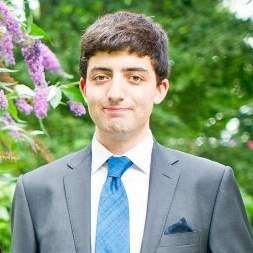For a bleak opera which is unapologetically short on action or big tunes, WNO’s resurrection of their 1984 House of the Dead is a remarkably entertaining affair. David Pountney’s production is visually and musically arresting, and a worthy contributor to Cardiff’s ‘R17’ celebration of the Russian Revolution.
The 90-minute, interval-free opera is an extended portrait of Siberian prison camp life, in which the only real action is the arrival and departure of a political prisoner amid a series of tales from the camp’s inmates. The scarcity of any depth of plot places high demands upon the protagonists, both musically and dramatically. Fortunately, with a uniformly excellent line-up of principals and the gentlemen of the WNO Chorus singing at their usual high standard, there were riches of the highest order on offer tonight.
The use of Pountney’s own English translation, itself as smooth as could be hoped for, was a shrewd move, as was the first performance of John Tyrrell’s new, much cleaned-up edition of the score. The undoubted highlight of the evening was the unwaveringly superb playing of the WNO Orchestra, under their Czech Music Director Tomáš Hanus (himself a native of the composer’s own city, Brno). Janacek’s writing is fiercely virtuosic in places, both in terms of individual demands (string soloists and timpani most memorably) and ensemble requirements. Hanus did a remarkably good job of balancing the idiosyncrasies of the scoring, allowing every detail to shine through even in Janáček’s bizarre combinations of low brass, solo violin and voices. The wall of sound supplied at the close of Scene 1 by the brass and extensive percussion section was a thrill to behold.
Stand-out performances among the principals came from Luka (Mark Le Brocq) and the Commandant (Robert Hayward). In the first scene, Le Brocq sang the tale of Luka’s prior flogging with immense intensity, his big, rounded voice and strong acting taking complete control of the stage. The Commandant’s treatment of the political prisoner, Gorjančikov, was similarly striking in its brutality. In Scene 2, Skuratov (Alan Oke) sang movingly of his lost love, Luisa. The tension sagged only slightly in the third episode as Simon Bailey’s Šiškov took his turn to tell his story, despite Bailey’s excellent voice. Articulation from soloists and chorus alike was impeccable, and the chorus’ hymn to ‘Eagle Tsar’ near the opera’s close was enough to raise more than a few hairs.
The big set-pieces were exceptionally well done. The Easter Day spectacle, in which the prisoners entertain themselves with pantomime versions of Kedril and Don Juan and The Lovely Miller’s Wife, was enormous fun, carrying an air of the bawdy end-of-year revue. The orchestral prelude to Scene 2 saw a fascinating string of individual scenes set up at various locations on the set through Chris Ellis’ inventive lighting. We saw, in turn, half a dozen miniature glimpses into camp life, from petty scuffles to welding and tormenting of the caged eagle which sits on one side of the stage. The eagle itself, a reasonably convincing moving model, was variously transformed into a large rear wall projection. More might perhaps have been made of its eventual release to freedom, but it was otherwise an effective piece of theatre.
The vastly detailed, visually arresting set remains a constant throughout the opera. Such is its scope, with numerous enclaves, outcrops and platforms, that it permits a great deal of drama to continue away from the centre stage. Costumes were realised with similar attention to detail. This is, overall a slick, moving and at times laugh-out-loud funny piece of musical theatre, backed by a world-class orchestra and chorus.




